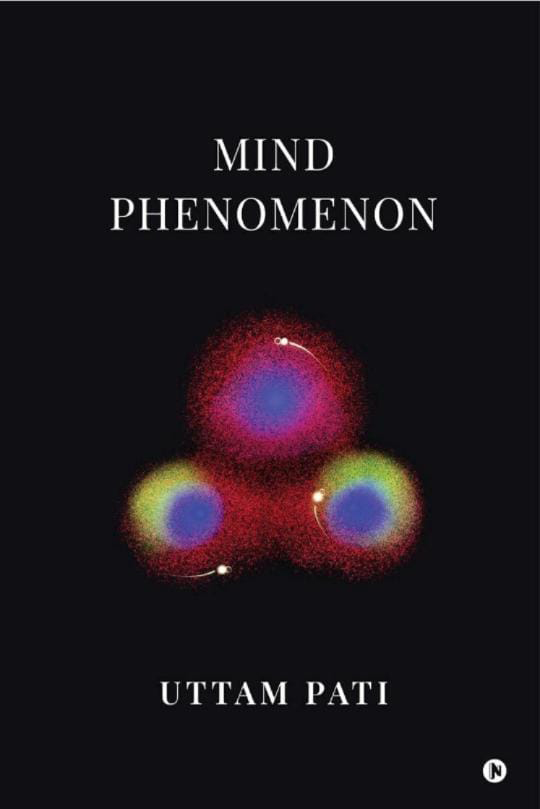Book review by G Padmanabhan, Honorary Professor, Department of Biochemistry, former Director Indian Institute of Science, Bengaluru
I have a deep interest in Advaidic Philosophy, although I cannot claim to be a practitioner. It enunciates the principle of Self as the ultimate. The Bhagavad Gita also projects intellect above the mind, and Self above the intellect. In the ultimate state of Self, there is no difference between the seer and the seen. There is only one ultimate reality. Duality is the reason for the miseries of the world and mind is the chief arbiter of duality. However, mind is the instrument of Life. Purity of mind is essential to move ahead to the next stage. All ethics, morality, and value-based conduct of mankind is to purify the mind into a state of positive orientation to realize the ultimate reality.

A jnani (spiritually-oriented intellectual) has realized the Self and lets his mind function with absolute detachment. But what is this mind? Intellectuals in different walks of life, have attempted to define the mind but it has remained an abstract entity. Uttam Pati, in a bold initiative, has attempted to explain this mind-body paradox in his small book Mind Phenomenon. The book is small only in the number of pages, but it required a tremendous effort, at least on my part, to understand its fundamentals before attempting to comprehend the book’s message. It has only 6 chapters spreading out on 150 pages, and at times I found the linkage between topics a bit unclear. It needs to be acknowledged that we all stand on the shoulders of a large number of people from different walks of life, who knowingly or unknowingly have laid down a path that can be lit for posterity.
Let me try to summarize what I have understood. The brain has trillions of neurons and is the seat of consciousness. The mind links the brain (body) to consciousness. Waves and waves of thought processes define the mind, which depends on the functioning of the brain, described as the “garden for flowers to bloom and cactuses to grow”. Trillions of cells communicate with each other within the brain and elsewhere in the body to create a conscious human being. A characteristic of the neurons is the presence of neurotransmitters converting chemical to electrical signals. Uttam proposes, or raises, the question whether there is cellular consciousness. The book’s take-home is, in the words of Uttam, “a hypothetical Unit Particle (UP), a potential subtle-crude entity, may be responsible for the expression of the mind in a cell, which could establish a liaison between the cells crude molecular units and the subtle layers of mind”. The mind and the cell are further conceived “as a miscible distillate, with an invisible interface, which makes the cell both to refract and pulsate”. In a further expansion of the concept, the UP is defined as the energy unit of consciousness, solely responsible for expression of mind with a self-operational switch. The UP is not physically or structurally defined. However, functionally its composition is suggested to enable control of cell behavior through diverse molecules, DNA, RNA, Protein, amino acids, stem cell and cellular mind as a whole. Consciousness can, in simple language, bring past and present together, which is perhaps the basis of superposition, entanglement and coherence in the quantum state. Virus, as an example of UP, is considered. It is an ancient, living-non-living, ‘intergalactic traveler’. Could some archaic virus be a precursor of human DNA? Extra-terrestrial life forms have been the subject of many debates and claims. Uttam brings in the proposition of Hoyle-Wickramasinghe, that extraterrestrial viruses and terrestrial forms could have co-evolved and even disperse locally modified genes back into the cosmos.
This book is dedicated to P R Sarkar (Shri Shri Anandamurti), who introduced the theory of Microvitum (MV), smaller than that of sub-atomic particle, essential for the sustenance of vital energy and contribute to “pure consciousness”. These can all lead to endless debates and so is the answer to the question what existed before Big Bang! The bottom line is the projection of UP as the fundamental unit of mind. UP can be positive or negative. Virus is, perhaps, an example of negative UP, although it eventually leads to the build-up of the immune system to fight the disease. A significant proposition is that the positive and negative states are reversible. Basically, one can make one’s life by positive thinking, which is “self-producing, self-maintaining, self-repairing and self-relational aspects of living systems”. Pranayama, control of breath, is fundamental to regulate oxygen supply at the cellular level. It is necessary to stabilize the unit mind that is governed by unit particle. Chaos in the mind can interfere and oxygen can quench the stress, basically suggesting pranayama, meditation would be the answer: unit mind, quantum mind, polarity, propensity, free will are all manifestations of the UP.
Does this book say anything new? Reversible thought process, control of thought process through meditation/pranayama, to perform karma with detachment, mind control for the welfare of humanity, Lokah samasthah Sukhnio Bhavantu (“may all beings everywhere be happy and free”) are all fundamental principles of Sanatana Dharma, the eternal law. While, the book reemphasizes the value-based, reversible thought process, it proposes something new: the unit particle. The UP of the mind links the cellular processes to the mind phenomenon, but it is not structurally defined. Cells have a plan of action and there is consciousness at the cellular level. I believe, this is a bold initiative to try and offer a scientific basis for consciousness. As with every other theory in this field, it is a proposition that can be debated and challenged. For example, David Bohms quantum field theory, applicable to matter and consciousness, or the “orchestrated objective reduction” (wave function collase) of Penrose and Hameroff, suggesting microtubules as suitable hosts for quantum behavior, have been contested and debated. The bottom line is that there is a missing link between physics and neuroscience, provided consciousness is just not viewed as a metaphysical problem but an issue of mathematical neuroscience. UP as a fundamental unit of consciousness of the mind is another bold concept that can be challenged and debated. Future will deliberate on Uttam’s proposition, “This newly conceived particle may influence cellar and deep layers of mind via a quantum-cell-conscious pathway”.
Published in Neohumanist Review, Issue 1, September 2023, pp 72-73.


1 thought on “Mind Phenomenon”